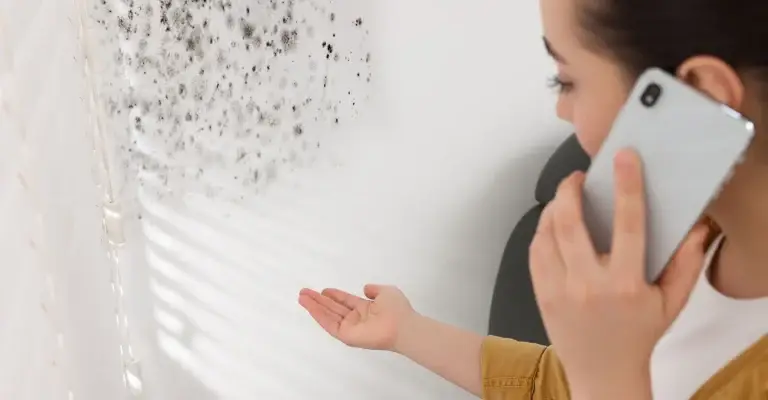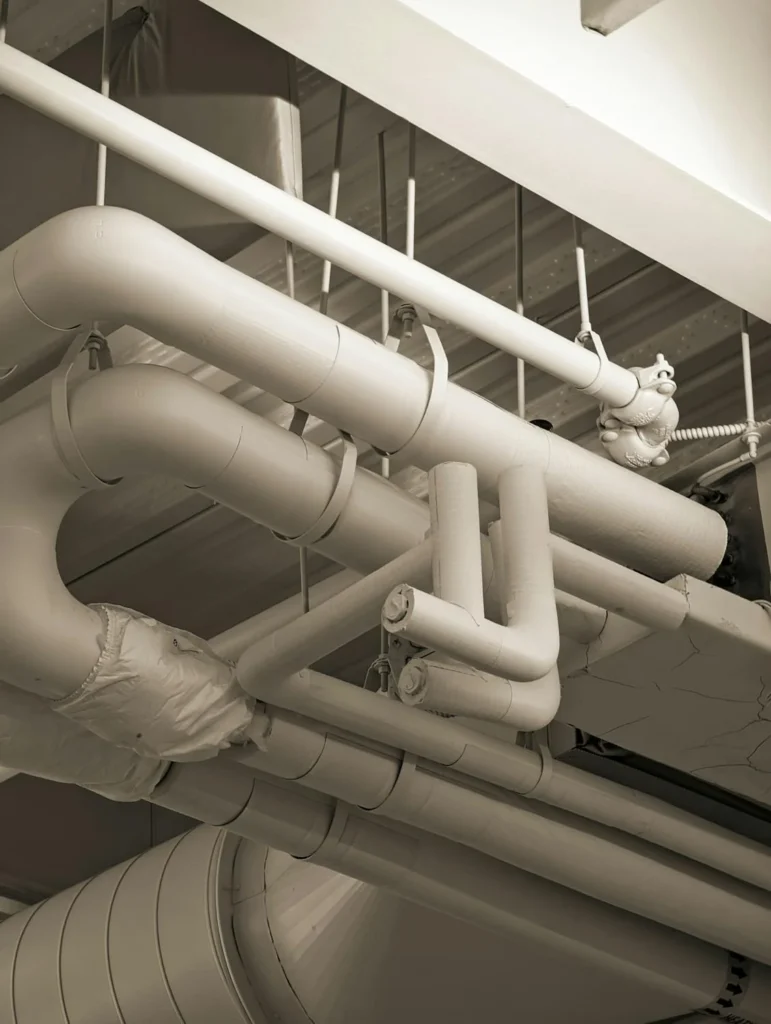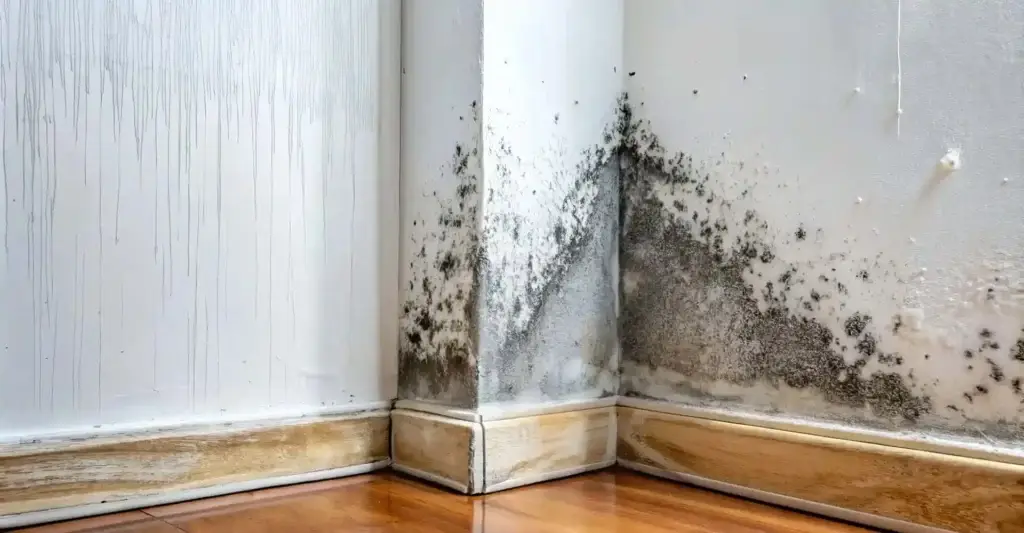Quick answer
For UK homeowners, mould is a common fungi thriving in damp, humid conditions, often due to condensation and varied property structures. Identifying mould involves looking for black, white, or green fuzzy/slimy patches in areas like bathrooms, kitchens, basements, and behind furniture, often accompanied by a distinct musty, earthy smell. Beyond its unsightly appearance, mould poses significant health risks, particularly for vulnerable individuals. Given these dangers and the complex nature of its thorough elimination, professional mould removal is essential for effective and safe remediation, ensuring your home remains healthy and protected.
Discovering mould in your UK home
Finding mould in your home can be alarming, but you’re not alone. This guide from Ideal Response will walk you through identifying common mould types, understanding their potential health risks, and knowing when it’s time to call in the professionals for safe, effective removal. Don’t let mould compromise your home or your health – discover the steps you need to take.
What exactly is mould and why does it grow in UK homes?
How to spot mould: Common types and where to look
- Black Mould: Often appears as dark green or black slimy spots. Commonly found in bathrooms (around tiles, grout, ceilings), kitchens, and basements.
- White Mould: Can look fuzzy and powdery, sometimes mistaken for efflorescence (salt deposits on masonry). Often found on concrete, brick, or in cool, damp basements.
- Green Mould: Typically fuzzy and found on food, but can also appear on walls or fabrics in damp conditions.
- Pink Mould: Often found in bathrooms, but it’s typically a bacteria (Serratia marcescens) rather than a true mould, thriving in soap scum and moist environments.
Where to check:
- Bathrooms: Shower tiles, grout, ceilings, behind toilets, under sinks.
- Kitchens: Around sinks, behind appliances, in cupboards.
- Basements/Cellars: Walls, floors, stored items.
- Bedrooms: Behind wardrobes, along external walls, around window frames.
- Lofts: Especially if there’s a leak or poor ventilation.
- Around leaking pipes or roofs.
- On fabrics, carpets, and upholstery.
Beyond visible signs, a musty, earthy smell is a strong indicator of hidden mould growth.
The hidden dangers: Health risks associated with mould exposure
Common health effects of mould exposure include:
- Respiratory Problems: Coughing, wheezing, shortness of breath, asthma attacks (especially in those with pre-existing conditions).
- Allergic Reactions: Sneezing, runny nose, red eyes, skin rash, and other allergy symptoms.
- Irritation: Eye, nose, throat, and skin irritation.
- Headaches and Fatigue: Some individuals report these symptoms after prolonged exposure.
- Weakened Immune System: In severe cases or for those with compromised immune systems, mould can lead to more serious infections.
DIY mould removal vs. professional mould remediation: Knowing the difference
When DIY might be okay (Small, surface mould):
- Size: The mould patch is small (e.g., less than 1 square metre, or roughly a door tile size).
- Location: It’s on a hard, non-porous surface like tiles or glass.
- Cause: The cause of moisture is minor and easily fixable (e.g., condensation around a window that can be wiped daily).
How to DIY safely (if applicable):
- Protect Yourself: Wear gloves, eye protection, and a mask (preferably an N95 respirator).
- Ventilate: Open windows and doors.
- Clean: Use a dedicated mould remover or a mixture of detergent and water. Avoid bleach on porous surfaces, as it doesn’t kill the mould roots and can cause further damage.
- Dry Thoroughly: This is crucial! Ensure the area is completely dry after cleaning to prevent re-growth.

When you ABSOLUTELY need professional mould removal:
- Size: The mould covers a large area (more than 1 square metre).
- Location: The mould is on porous surfaces like drywall, insulation, wood, or carpets.
- Smell: You have a strong, persistent musty smell, even if you can’t see the mould. This indicates hidden growth.
- Health Concerns: You or your family are experiencing mould-related health symptoms.
- Cause: The mould is due to a persistent leak, flooding, or structural dampness that you cannot identify or fix yourself.
- Recurrence: You’ve tried DIY methods, and the mould keeps coming back.
Why professional removal is essential:
Preventing mould growth: Actionable steps for UK homeowners
1. Improve ventilation:
- Open windows regularly, especially after showering or cooking.
- Use extractor fans in bathrooms and kitchens.
- Consider trickle vents in windows.
2. Control humidity:
- Use a dehumidifier in damp areas like basements or during humid weather.
- Aim for indoor humidity levels between 30% and 50%.
3. Fix leaks promptly:
- Regularly check for leaks in pipes, roofs, and around windows.
- Address any leaks immediately, no matter how small.
4. Dry wet areas:
- Wipe down shower walls and condensation on windows immediately.
- Don’t leave wet towels or clothes lying around.
5. Increase air circulation:
- Leave a gap between furniture and external walls to allow air to circulate.
- Avoid overfilling wardrobes and cupboards.
6. Insulate:
- Improve insulation in walls and lofts to reduce cold spots where condensation can form.
Got mould? Ideal Response is your local expert
If you suspect a mould problem in your home, don’t ignore it. Ideal Response offers comprehensive mould surveys and professional mould remediation services across the UK, including:
- London
- Maidstone
- Sevenoaks
- Canterbury
- Medway
- etc.
- Identify the Source: Locate the root cause of your moisture problem.
- Contain the Contamination: Prevent mould from spreading to unaffected areas.
- Safe & Effective Removal: Using industry-approved methods and eco-friendly solutions.
- Dehumidification & Drying: Ensure the affected area is thoroughly dried.
- Air Purification: Remove airborne mould spores and odours.
- Prevent Recurrence: Advise on long-term prevention strategies.
Mould in UK homes: Frequently asked questions
What is mould and why is it common in UK homes?
Mould is a type of fungi that thrives in damp, humid conditions and reproduces by releasing spores. It’s common in UK homes due to factors like older property structures, varying insulation, limited ventilation, and frequent condensation, which create ideal environments for its growth in areas such as bathrooms, kitchens, and basements.
How can UK homeowners identify mould in their property?
UK homeowners can identify mould by its appearance as black, white, green, or even pink fuzzy/slimy patches on surfaces. Common locations include bathroom tiles, kitchen sinks, behind furniture, external walls, and around leaky areas. A strong musty, earthy smell is also a key indicator, even if mould isn’t visible.
What are the common types of mould found in UK homes?
Common types of mould in UK homes include Black Mould (often dark green/black, slimy), White Mould (fuzzy, powdery, sometimes mistaken for salt deposits), Green Mould (typically fuzzy on walls or fabrics), and Pink Mould (often a bacteria, found in bathrooms). Each thrives in damp conditions.
What are the health risks associated with mould exposure in a home?
Mould exposure in a home can pose significant health risks, especially for vulnerable individuals like children, the elderly, and those with respiratory issues or weakened immune systems. Symptoms can include respiratory problems, allergies, asthma attacks, skin irritation, and other health complications from inhaling mould spores or toxic substances produced by some moulds.
When should a homeowner call a professional for mould removal?
Homeowners should call a professional for mould removal if the mould covers an area larger than 1 square meter, if it’s due to water damage or leaks that haven’t been fully dried, if they experience persistent health symptoms, or if they suspect hidden mould due to a strong musty smell. Professionals ensure safe and effective eradication and address the root cause.
Where are common places to find mould growth in a UK house?
Mould commonly grows in areas of high moisture and poor ventilation in UK houses. These include bathrooms (tiles, grout, ceilings, behind toilets), kitchens (around sinks, behind appliances, in cupboards), basements/cellars, bedrooms (behind wardrobes, along external walls, around window frames), and lofts, especially near any leaking pipes or roofs.
Is mould removal covered by home insurance in the UK?
Generally, standard home insurance in the UK does not cover mould removal if it resulted from a preventable issue like poor maintenance or condensation. However, if the mould is a direct result of a covered peril, such as a sudden burst pipe, you may be covered for the resulting damage, including mould remediation. Always check your specific policy details.

Kayleigh Owen - Technical Account Manager
With years of dedicated experience in the disaster recovery industry, Kayleigh Owen brings a precise and insightful approach to every project. Holding a BSc Hons Degree, Kayleigh specialises in construction and major loss, expertly navigating the complexities of large-scale fire and flood events. Having spent her entire industry career at Ideal Response, she has honed a deep understanding of what it takes to restore properties and lives with efficiency and empathy. Kayleigh believes that meticulous planning and clear communication are the cornerstones of transforming disaster into recovery, ensuring every client receives not just a solution, but true peace of mind.





















